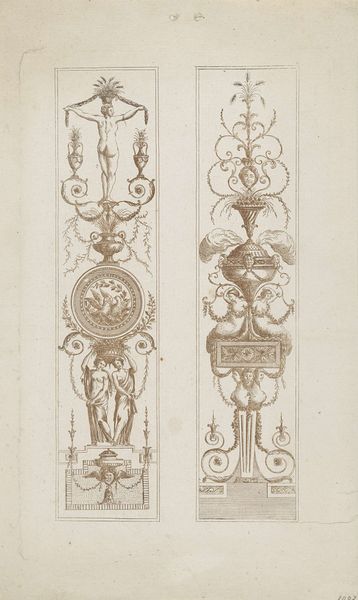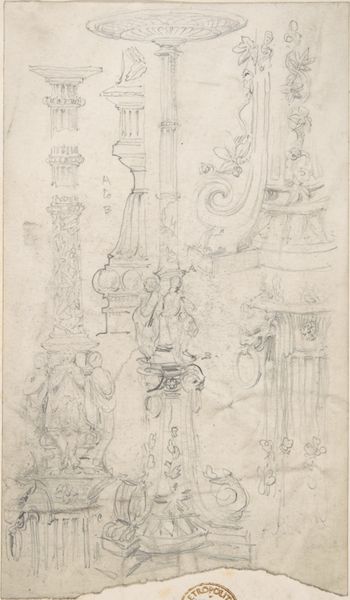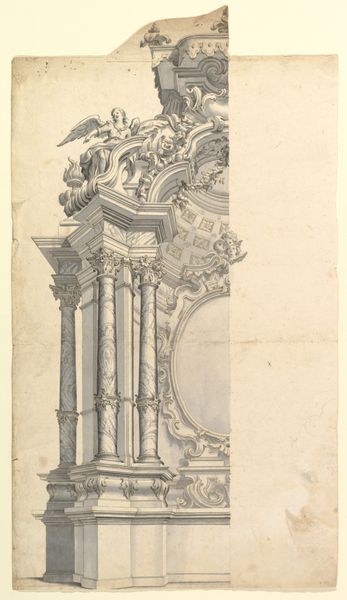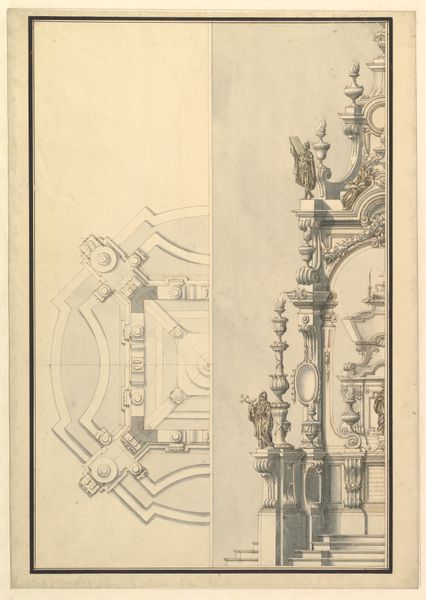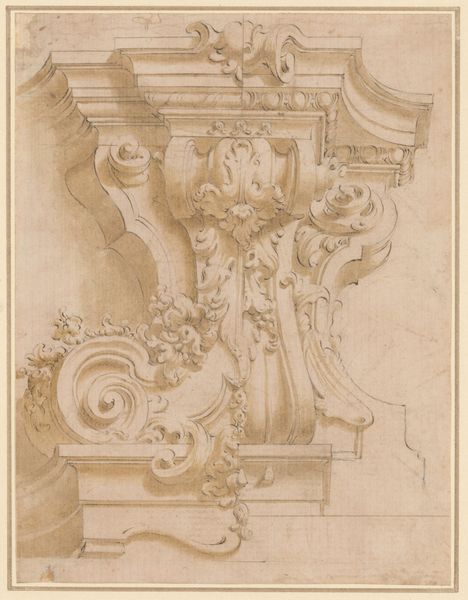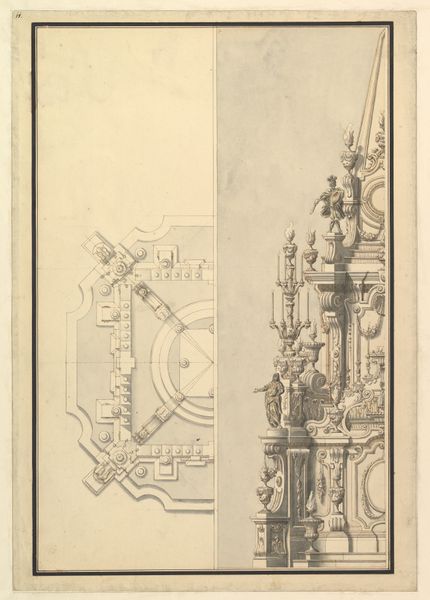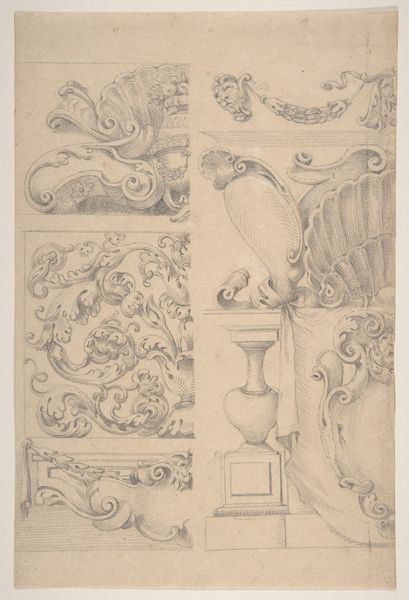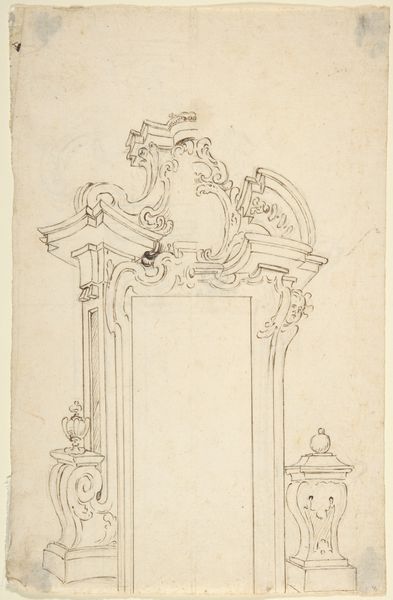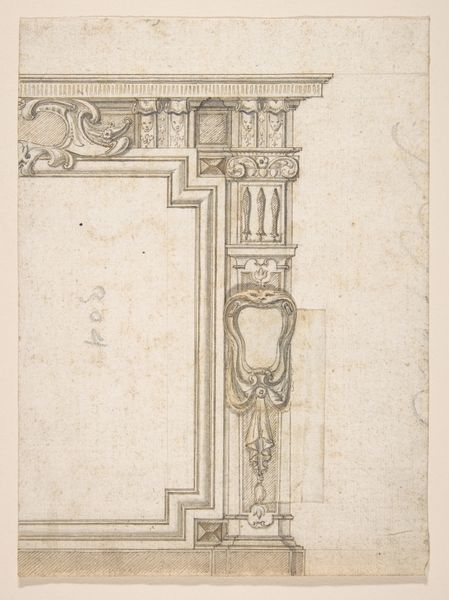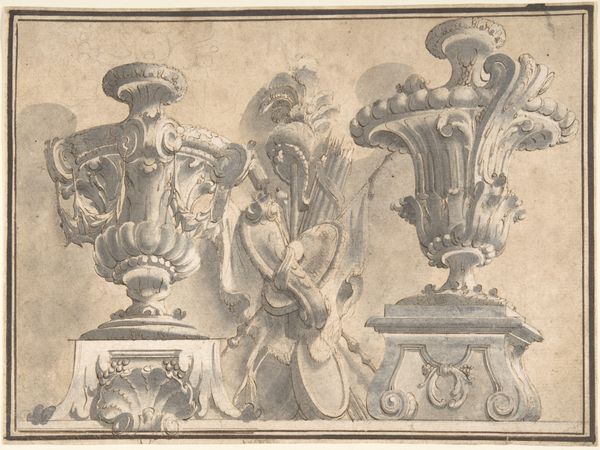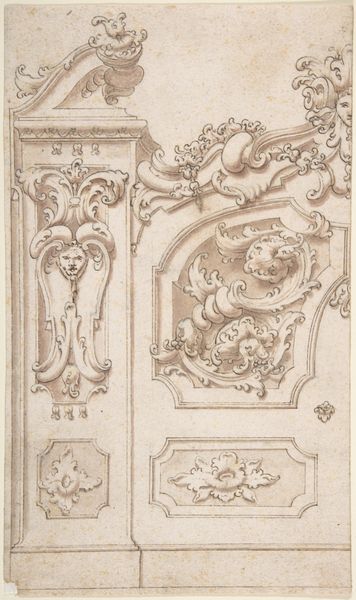
Brackets, Caryatids and other Architectural Details (recto and verso) 1672 - 1742
0:00
0:00
drawing, print, architecture
#
drawing
#
baroque
# print
#
form
#
line
#
architecture
Dimensions: Sheet: 11 7/8 × 7 3/4 in. (30.1 × 19.7 cm)
Copyright: Public Domain
Curator: This fascinating print, residing here at the Metropolitan Museum of Art, is titled "Brackets, Caryatids and other Architectural Details," likely dating between 1672 and 1742, and attributed to Gilles-Marie Oppenord. Editor: It feels almost dreamlike, seeing these fragmented architectural elements sketched so delicately. The repetition of forms, the busts, the stylized lions—it's like a collection of forgotten power symbols. Curator: Oppenord, as a key figure in the French Régence and Rococo styles, was hugely influential through his ornamental designs, spreading new styles to a wider audience via prints such as this. Consider the rigid formalism of Louis XIV's court replaced with lightness, asymmetry, and intimate designs suited to emerging, newly rich middle classes. Editor: The caryatids really strike me. Throughout history, the female form has often been used structurally to literally "hold up" architecture. How does this visual burden affect perceptions of gender roles? Are women presented here as pillars of society, or as passive supports to a male-dominated world? Curator: Precisely! That visual vocabulary of support and burden reflects and reinforces existing social structures, and this example certainly makes one think about such complex associations with gender, duty, and visibility. Moreover, each architectural bracket here isn't just a physical support, it’s a statement of power and refined aesthetics intended to communicate a particular message about the patrons of those designs. Editor: Looking closely, I also see variations on lions and sphinxes used as ornamental motifs. It's so intriguing how ancient mythological symbols like the sphinx retain such strong associations with mystery, wisdom, and authority over vast expanses of time and culture. It seems like Oppenord consciously employs their timeless power. Curator: This points towards something really fundamental – the Baroque and Rococo wasn't just decorative excess, it also actively reclaimed historical motifs to re-imagine political statements. It reminds us that these designs have far reaching social consequences that impacted power dynamics. Editor: Definitely, there is more than meets the eye. It shows how seemingly decorative elements can become powerful carriers of complex ideas about identity and structure. Curator: Agreed; this work truly provides ample ground for exploration. Editor: Absolutely. I leave this re-energized to go out in the world to examine building facades with newfound curiosity!
Comments
No comments
Be the first to comment and join the conversation on the ultimate creative platform.

